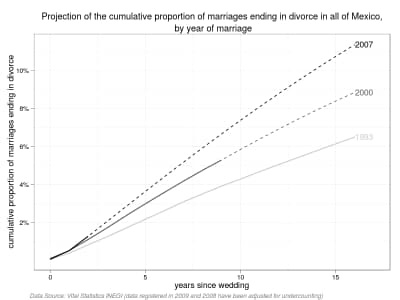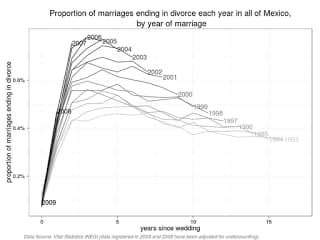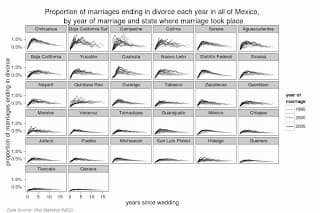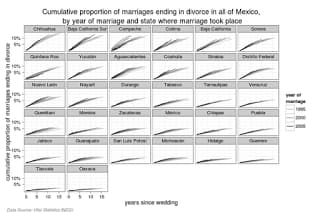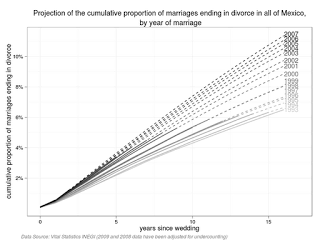Looking at the the period during which marriages are more likely to end in divorce it seems there is a 3 to 7 year itch.
and by state we see that the rise in the proportion of marriages that end in divorce has been nearly universal across the states of Mexico, though, of course, there is some internal migration within Mexico and more recently people have been divorcing in the Federal District because of its more permissive divorce laws, so the numbers aren’t exact.
Cumulative proportion by state:
While it will take more than a decade to obtain long term marriage dissolution data for recent cohorts, the rising pattern looks very predictable and I used a multi-level model to predict future marriage dissolutions. The data has been adjusted because divorces registered in 2009 were under-counted by about 5%, and those registered in 2008 by about 1%.
Cross country comparisons are always problematic, but comparing the percentage of all marriages that end in divorce in Mexico to first marriages that end in divorce in the US (not an apples to apples comparison!), the divorce rate would be lower in Mexico than in the US during the 1950s. See Figure 2 of Marriage and Divorce: Changes and their Driving Forces by Stevenson and Wolfers.
There are a couple of reasons why my assumptions in making the estimates may be wrong:
- Thought I did add a dummy variable denoting if express divorce had been approved, if divorces keep increasing and increasing in the Federal District eventually they’ll make a dent in the country wide statistics. And as I mentioned in the post there is some uncertainty on whether the rise will prove permanent.
- As we saw in my last post express divorce has proven particularly popular outside the Federal District, so I wouldn’t be surprised if in the future other states adopted similar laws.
P.S. You can download the code from my GitHub account
